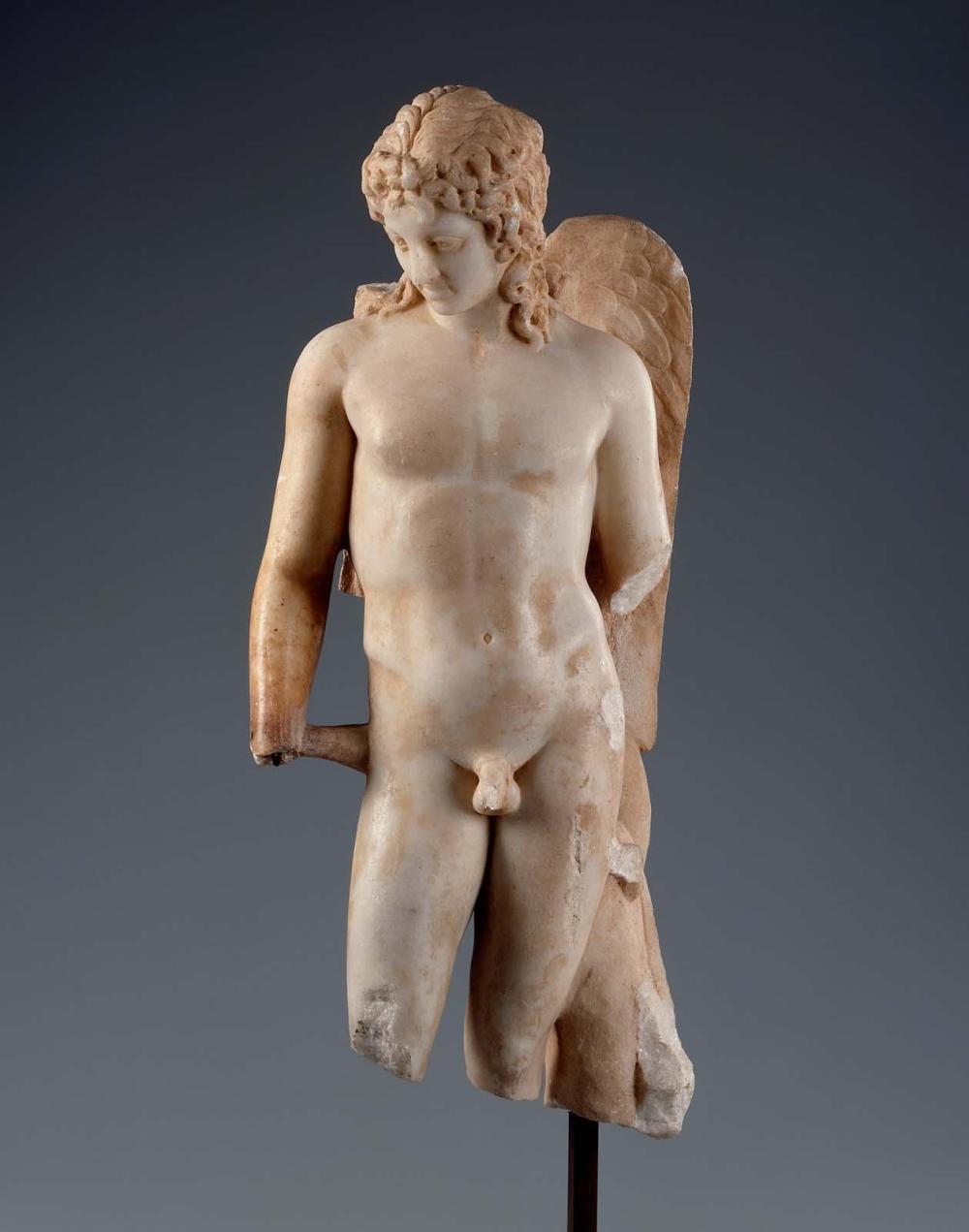Advanced Search
Cupid (Eros)
Roman
Imperial Period
about A.D. 190
Medium/Technique
Marble, probably from the Greek island of Paros
Dimensions
Height: 63 cm (24 13/16 in.)
Credit Line
Classical Department Exchange Fund
Accession Number1979.477
CollectionsAncient Greece and Rome
ClassificationsSculpture
The youthful god of love, Cupid (or Eros, as the Greeks called him) stands pensively, head lowered and arms at his sides. This is one of more than twenty similar marbles thought to reproduce a common prototype. It may in turn have been modeled on an earlier Greek masterwork—perhaps a bronze by the renowned Athenian sculptor Praxiteles. For the Greeks, statues of Eros served primarily as dedications at religious sanctuaries, but Romans thought images of the playful love-god a suitable decoration for opulent residences.
Catalogue Raisonné
Sculpture in Stone and Bronze (MFA), no. 020.
DescriptionThe under life-size winged Cupid, of the Centocelle type, stands with his weight on his left leg with his hip cocked to his left; his right leg is advanced and his right shoulder is raised slightly above the other shoulder. He gazes down towards his right. The cascades of long curls that fall on his shoulder and the large wings affixed to his back are intricately carved and contrast with the polished smoothness of his face and lean torso. Toned body of a youth without well defined musculature. Remnants of a quiver visible hanging on the tree trunk behind the figure.
Condition: Breaks along the upper left arm, lower right arm along the wrist, both legs near the knees, genitalia, right wing, and lower half of the tree trunk support. Remains of struts are visible on the left thigh, left hip, possibly at the top of the right knee, and between the right wrist and hip. The right hand was made separately and joined with an iron dowel, which remains in the center of the wrist. Traces of a yellow patina. Iron stains along the right wrist.
Scientific Analysis:
Harvard Lab No. HI244: Isotope ratios - delta13C +2.51 / delta18O -3.08, Attribution - Aphrodisias 2, Paros 2, Prokonnesos, Thasos-Cape Phaneri & Thasos-Aliki, Usak, Mylasa, Naxos-Melanes, Justification - Grayish, coarse grained marble.
Condition: Breaks along the upper left arm, lower right arm along the wrist, both legs near the knees, genitalia, right wing, and lower half of the tree trunk support. Remains of struts are visible on the left thigh, left hip, possibly at the top of the right knee, and between the right wrist and hip. The right hand was made separately and joined with an iron dowel, which remains in the center of the wrist. Traces of a yellow patina. Iron stains along the right wrist.
Scientific Analysis:
Harvard Lab No. HI244: Isotope ratios - delta13C +2.51 / delta18O -3.08, Attribution - Aphrodisias 2, Paros 2, Prokonnesos, Thasos-Cape Phaneri & Thasos-Aliki, Usak, Mylasa, Naxos-Melanes, Justification - Grayish, coarse grained marble.
ProvenanceDate unknown: said to have been found at Laodiceia ad Mare in Syria according to RDAC 1988, pt. 2, p. 141; by 1979: with Münzen und Medaillen A.G., Malzgasse 25, Basel, Switzerland (shown at Schweizerische Kunst-und Antiquitätenmesse 1979, Basel, 24 March through 3 April); purchased by MFA from Münzen und Medaillen A.G., October 17, 1979



